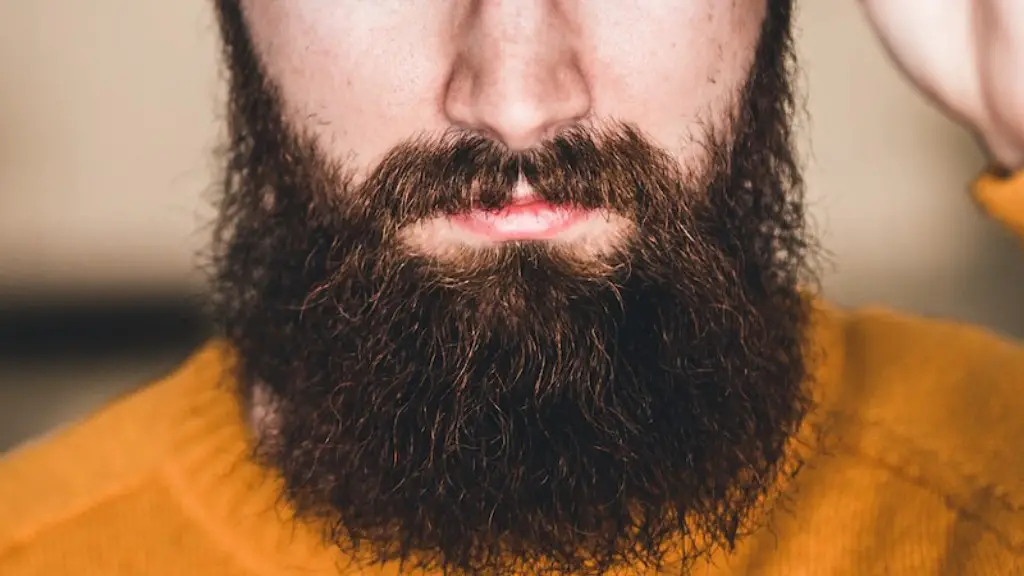Do you wonder how to shave a beard with a razor? When shaving off your beard, you want to ensure your skin isn’t damaged and the hair removed as cleanly and as quickly as possible. It is common among men that wish to grow a beard, to maintain a trimmed, stylish look. There are several items a man can use for this task.
One option for shaving a beard with a razor is a disposable razor. They are inexpensive, give you a close shave, and have fewer clogging issues when compared to some electric razors. But they still require a certain level of skill. It is important to use a light touch when shaving with a razor and multiple strokes are usually needed to get the right finish.
Another option is an electric razor or beard trimmer. Electric razors are popular because they are fast, efficient, and relatively easy to use. You can find an electric razor with a size and variant designed explicitly for beard shaving. These razors often come with additional features that facilitate the task, such as adjustable combs, which make trimming your beard easier.
Traditional wet shaving with metals and cream is still a popular choice for some men. This old-fashioned method requires the use of a double-edged safety razor, a shaving brush to spread the lather, and a lathering cream. When done correctly, this method produces a very close shave.
It is important to prepare your skin before shaving. Gently massage cream, lather, or shaving soap, unless you’re using an electric razor, into the face, using a shaving brush. This will help soften hairs for a closer shave and reduce the risk of razor burn.
It is also important to use sharp blades. A dull razor will drag across the face, leading to skin irritation and potential cuts. Depending on the frequency of your shave, you should purchase fresh blades every two to three weeks. Also clean your razor after each use to extend its lifetime.
Finally, it is important to soothe the skin afterwards. Apply aftershave lotion, oil, or balm to help cool and calm the skin and reduce irritation and burning. And, when you soap yourself, ensure you use a mild cleanser and moisturizer to help keep the skin hydrated and soft.
Different Types of Razors
Although using a double-edged safety razor has become increasingly popular, there are several types of razors available for shaving a beard. Each has their own unique advantages and disadvantages, and it is important to choose one that best suits your needs and skin type.
An example of a popular razor is the cartridge razor. This type of razor comes with a built-in safety guard, preventing the blades from cutting too closely to the skin. This can be beneficial for people with sensitive skin, as it reduces the risk of cutting yourself. However, these razors are expensive and require a lot of maintenance.
An alternative is the straight razor, or ‘cutthroat.’ This classic razor has been around for centuries, and although it takes a long time to master the technique, they provide an incredibly close shave that can’t be replicated with other forms of razor.
Another option is the safety razor. This type of razor offers a close shave but with a guard, and so is considered safer than a straight razor. Safety razors differ by blade count, the number of blades is noted on the handle, the higher the number the closer the shave. And, the ones with fewer blades are gentler on the skin.
Shaving Process
After selecting the razor of your choice, it is time to start the shaving process. It is important to take your time and be patient, as shaving a beard can take some practice to get just right.
You should begin by stretching your skin as much as possible, as this will make it easier to get a closer cut on your beard. Then, starting at the neck, slowly move up the jawline and cheeks in short, quick strokes. Move the razor in the direction of hair growth, rather than against it. This will help prevent irritation and razor bumps.
It can be helpful to pause every few strokes, to ensure you are shaving in the right direction, as well as to check that you are getting the desired look.
When shaving over the lip and eyebrows, pay close attention to the direction of your razor. It is important that you do not go against the grain, as this can lead to nicks and cuts.
Finally, do not press too hard on the razor, as this can lead to skin irritation and razor burn.
Pre and Post Shaving Routine
For best results with shaving a beard, it is important to follow a pre and post shaving routine. Following your pre and post-shave routines can help keep the skin looking and feeling healthy, while also helping you to get the best results from your shave.
Before the actual shave, it is important to exfoliate and apply shaving cream. This will help soften the bristles and make them easier to remove. It can also protect the skin from irritation, which is especially important for those with sensitive skin.
After shaving, it is important to splash cold water on the face to help close the pores and reduce the chances of developing razor bumps. Then, apply a moisturizer immediately, as this will help to prevent irritations and reduce redness.
Finally, it is important to keep the razor clean from use to use. It should be washed regularly with warm water and a gentle soap. This will help to prevent bacteria from building up on the razor, which can lead to skin irritation or infection.
Shaving Blade Care
Taking care of your razor is just as important as the actual shaving process. Keeping the razor clean and sharp, as well as storing it in a safe place, can help to extend the life of your razor.
Razors should be stored in a dry, cool place and be sure that they are not exposed to extreme temperatures, such as boiling water. This can cause the blades to become dull and brittle, reducing the effectiveness of the shave.
When cleaning the razor, you should use a soft cloth and warm water to remove any residue from the blades. This will help to keep the blades sharp and reduce the risk of rusting. Additionally, blades should be replaced on a regular basis, typically every two to three weeks.
Finally, it is important to inspect the blades regularly. Replace the blade if you notice any nicks or signs of wear and tear. This will help to maintain the sharpness and ensure you get a close shave every time.
Shaving Technique
Shaving a beard with a razor is a skill, developed with practice and patience. It is important to use the right technique and be gentle when shaving. Pressing too hard on the razor can cause skin irritation and potential cuts.
It is important to ensure you are shaving in the right direction. This will help to get a closer shave and reduce the risk of irritation or razor bumps. And, when shaving the lip and eyebrows, go with the grain, rather than against it. This will minimize the risk of nicks and cuts.
It is also important to make multiple passes over each area for best results. The more passes you make with the razor, the closer and smoother the shave will be. Additionally, it is important to pause every few strokes to ensure you are shaving in the right direction.
Conclusion
Shaving a beard with a razor is an important grooming step for many men. It is important to use the right technique and find the right razor for your needs. Additionally, it is important to follow a pre and post-shave routine, such as exfoliating and moisturizing, to help keep the skin healthy and free of irritation. Lastly, it is important to take care of your razor, by cleaning and replacing blades on a regular basis, to ensure the best results.





